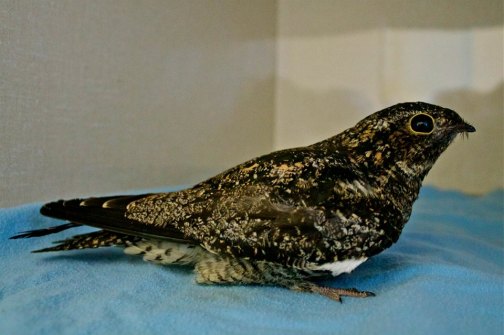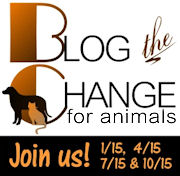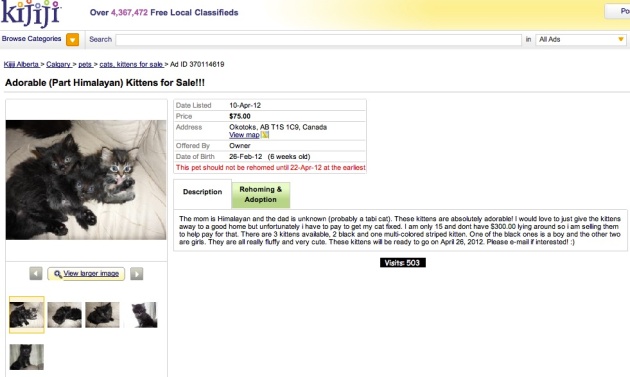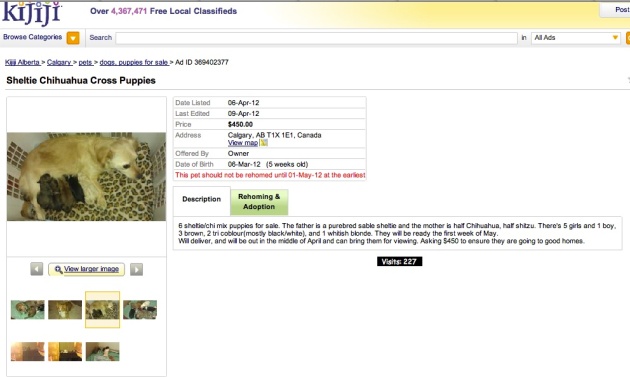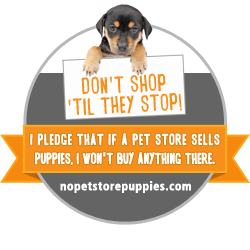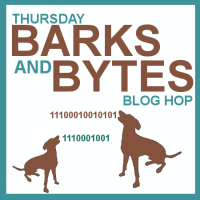BtC4A: Local Wildlife Rescue & Rehabilitation
January 14, 2014 30 Comments
It’s that time again!
The first Blog the Change for Animals for 2014 is here, and you can visit the BTC website and read the other posts by other bloggers by clicking here.

All of my previous Blog the Change posts have been about companion animal rescue efforts or campaigns, which makes a lot of sense for a dog blogger. And, of course, these are always extremely worthy recipients of donations, awareness, and volunteer efforts.
For this instalment, however, I’d like to change the focus.
Say your cat gets a hold of a bird in the yard. Say your dog goes after a porcupine or rabbit or skunk at the off-leash park. What if, after investigating a loud thud against the window, you find a dazed bird? What happens if a fawn is orphaned by poachers or some young goslings are orphaned by traffic? What if a family of foxes decide under your deck is their new home?
You might know to take your pets to the vet after wildlife encounters or even know pet first aid, but what about the other party to those situations – the wildlife? Do you know what to do with them?
Chances are there’s a wildlife hospital operating in your area for these very reasons: to help sick and injured wildlife as a result of human interaction.
Just north of Calgary you will find the Alberta Institute for Wildlife Conservation (www.aiwc.ca).
AIWC was founded in 1993 and is an ABVMA-certified wildlife hospital and trauma centre. AIWC treats and rehabilitates native wildlife injured or orphaned as a result of interactions with people.
AIWC operates in conjunction with Alberta Fish & Wildlife, the City of Calgary, and several local veterinary clinics who take after-hours patients until they can make their way to the centre.
In addition to providing care and treatment, AIWC is also a resource for information – found a bird in your yard unable to fly and not sure whether it needs intervention or is just a baby fledgling bird? You can call them and they can help out over the phone or send a rescue driver your way.
And if you’d like them to attend your school, community group, or event and present and educate on local wildlife, they do that, too (and have education ambassadors to bring along with them!).
AIWC also provides Wildlife Conflict Solutions, providing a humane, non-lethal, and permanent solution to resolve conflicts you may be experiencing with wildlife on your property.
AIWC isn’t the only wildlife centre operating in the area, either.
In southern Alberta, there is also the Calgary Wildlife Rehabilitation Society, the Cochrane Ecological Institute, and the Alberta Birds of Prey Foundation, among others.
If you’re in Edmonton, there is the Wildlife Rehabilitation Society of Edmonton.
Vancouver? See the Wildlife Rescue Association in Burnaby.
Saskatoon? Check out the Wildlife Rehabilitation Society of Saskatchewan.
Manitoba? There’s the Prairie Wildlife Rehabilitation Centre.
Toronto? Try the Toronto Wildlife Centre.
New Brunswick? Contact the Atlantic Wildlife Institute.
Those are just to name a few. There are centres like this operating all over the world to help local wildlife. Google [your location] + wildlife rescue and I’d be surprised if you didn’t get more than one nearby institution doing this important work.
Because it IS important.

The vast majority of patients at AIWC are birds. Here you have a magpie, an evening grosbeak, and a blue bird
These animals are often harmed or orphaned by no fault of their own or of natural circumstance, and the continual expansion of urban areas, agriculture development, and other industries make human-wildlife interactions inevitably more common.
And it’s not just us; it’s our pets, too. Environment Canada reported in October 2013 that domestic cats are the number one killer of song birds – just another reason to keep those kitties indoors! (The Oatmeal also did this awesome infographic on just how much wildlife our cats kill.)
And we all know dogs with a keen interest in rabbits, porcupines, squirrels – you name it. Sometimes those dogs get lucky.
These wildlife centres run on donations and volunteer support to help mitigate some of that impact and give some of those animals a second chance.
Just like any other conservation effort, wildlife rehabilitation is good for everyone, maintaining as much of our natural ecosystems as possible.
Now for your mission:
Make note of the nearest wildlife rescue or hospital and their contact information. Hopefully you’ll never need it, but it might be useful one day.
Find them online and on social media. Like their pages and spread their information – if you don’t know much about them, chances are others don’t either.
And, if you’ve got time or resources to spare, see what they need and how you can give.
Like any charity or non-profit, wildlife institutes are sustained by funds, time and supplies graciously donated by their supporters. See what they’ve got for ongoing fundraising campaigns (animal adoptions make great gifts for those hard to buy for people in your life!) and supplies wish lists.
And if you’d like to see more adorable patient photos from the Alberta Institute for Wildlife Conservation like the ones I’ve shared here, go like their Facebook page here. The person behind the camera for many of the photos there and the ones you’ve seen here may already be familiar to you ;).
Once you’ve completed your mission, go visit the Blog the Change for Animals blog hop and check out what everyone else is writing about.



